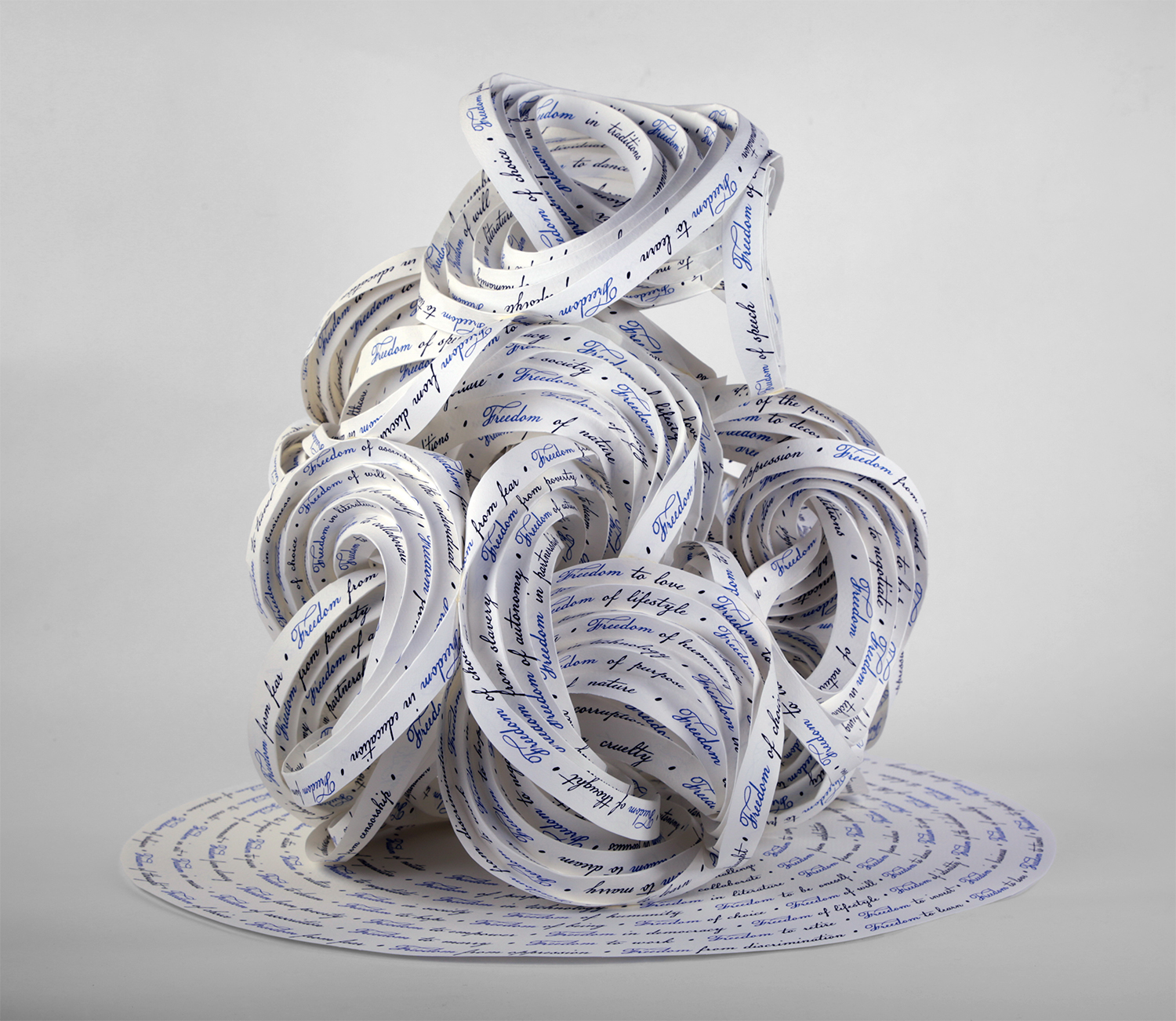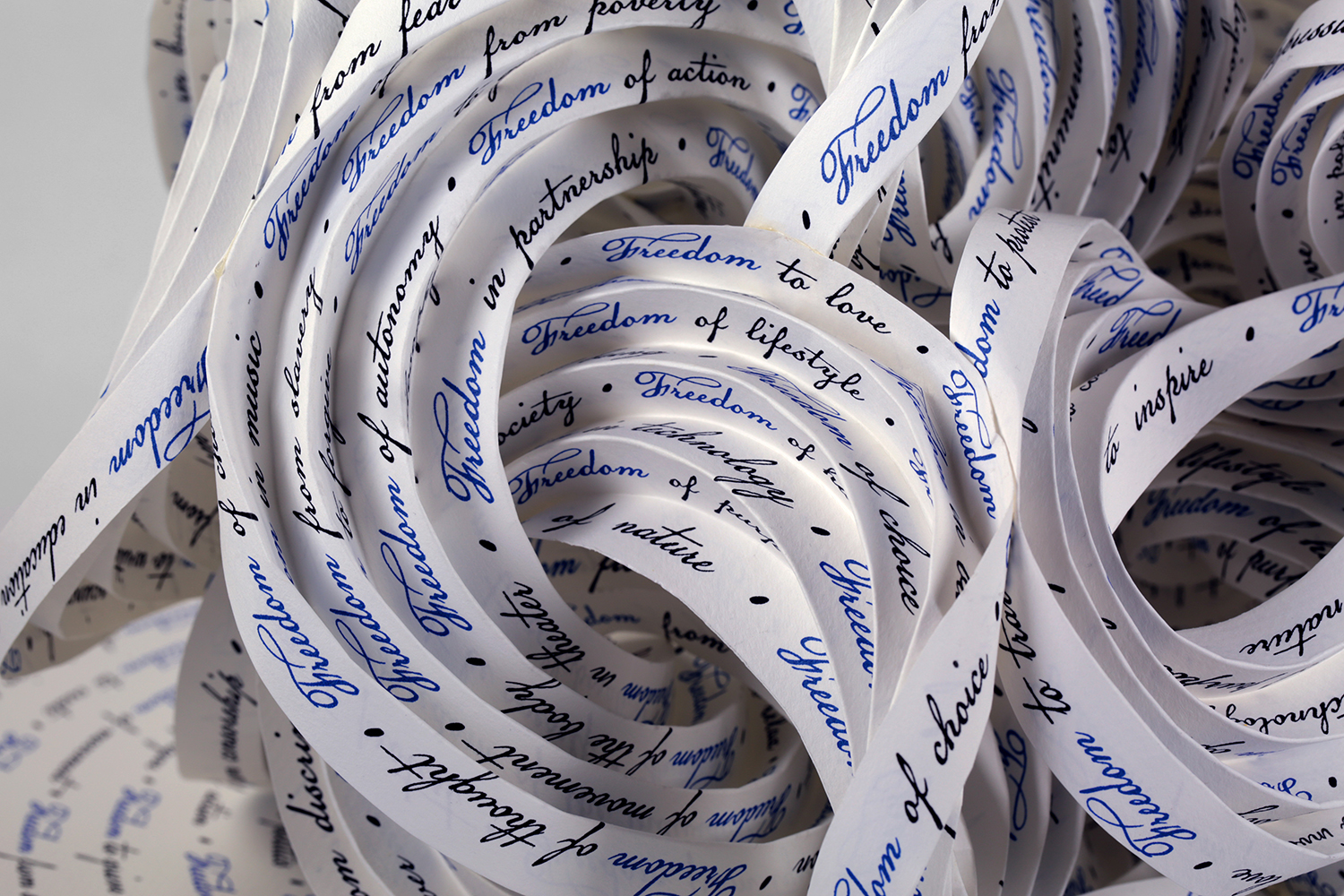Erik + Martin Demaine
Erik Demaine | Cambridge, Massachusetts USA / Canada | erikdemaine.org
Martin Demaine | Cambridge, Massachusetts USA | martindemaine.org
Collaborative work by Erik + Martin Demaine



Terms of Freedom
Artists book, Folded Mi-Teintes paper | 11 x 14 x 13 in.
ARTIST STATEMENT
“Freedom” comes in many different forms. Terms of Freedom is a demand for 88 such freedoms for all of humanity, created in collaboration with a large language model that encompasses much of recorded history. The list ranges from core freedoms (freedom from slavery, violence, war, and discrimination; freedom of the press; and freedom to marry) to everyday freedoms (freedom to live, love, and learn) to creative freedoms (freedom to create, inspire, and challenge.
BIO
Erik Demaine is a computer scientist and an artist. Since 2001, he has been a Professor in computer science at the Massachusetts Institute of Technology. Erik's research interests range throughout algorithms, from data structures for improving web searches to the geometry of understanding how proteins fold to the computational difficulty of playing games. He received a MacArthur Fellowship (2003) as a "computational geometer tackling and solving difficult problems related to folding and bending--moving readily between the theoretical and the playful, with a keen eye to revealing the former in the latter". Together with his father Martin, his interests span the connections between mathematics and art, including curved origami sculptures in the permanent collections of the Museum of Modern Art in New York, and the Renwick Gallery in the Smithsonian.
Martin Demaine is an artist and a computer scientist. He started the first private hot glass studio in Canada and has been called the father of Canadian glass. Since 2005, he has been the Angelika and Barton Weller Artist-in-Residence at the Massachusetts Institute of Technology. Martin works together with his son Erik in paper, glass, and other material. They use their exploration in sculpture to help visualize and understand unsolved problems in mathematics, and their scientific abilities to inspire new art forms. Their artistic work includes curved origami sculptures in the permanent collections of the Museum of Modern Art in New York, and the Renwick Gallery in the Smithsonian. Their scientific work includes over 100 published joint papers, including several about combining mathematics and art.
